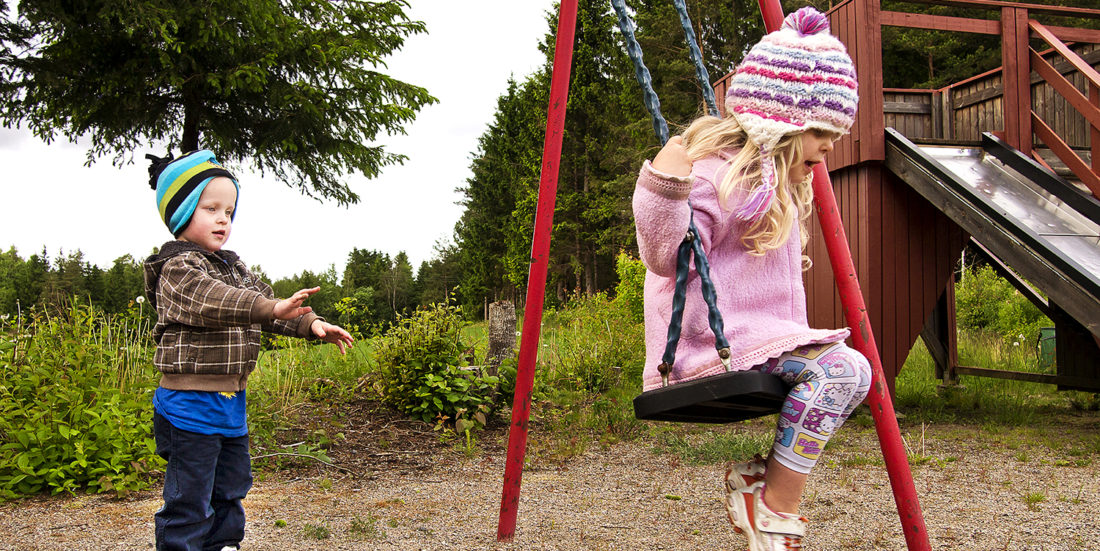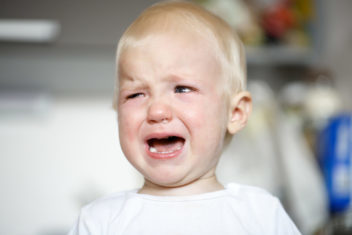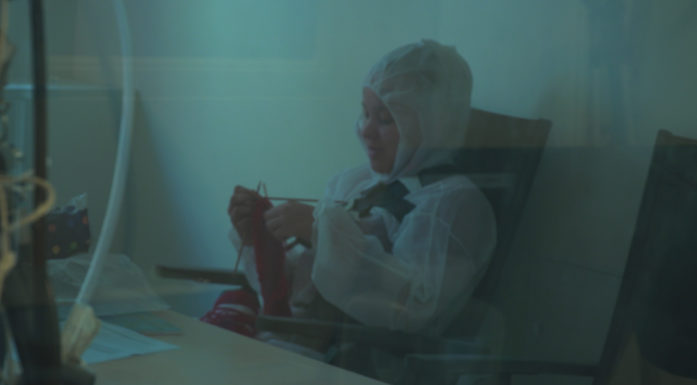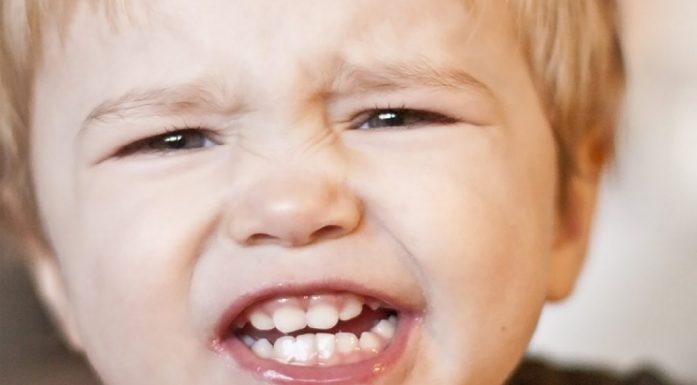Almost half of childcare children had respiratory virus
Forty-three per cent of children at two daycare centres researchers studied had at least one virus in their respiratory tract.
It’s that time of year again. The temperature is creeping downward. Fingers get cold on the bike ride to childcare in the morning. Winter coats are front and centre in the closet. Keeping track of your family’s rainwear and boots becomes the top priority.
Autumn not only brings the yellow leaves, it also brings mucousy, stuffy noses. And coughing. Earaches. Fever. Young children who cry and can’t sleep at night. The healthy summer family begins to falter, and before you know it, you’ve used up all your sick days. You have to go to work. Your youngest has to go to daycare. That’s just the way it is.
But when are young children really too sick to be in childcare? When they have a fever? Yes. But what if they just have green mucus and a cough? Don’t know. And that’s just it. It’s not always easy to know. Nina Moe, a PhD candidate at NTNU, has examined some of these questions.
- You might also like: Viruses that play hide and seek
Many children hospitalized with respiratory infections
Moe also works at St. Olav’s University Hospital in Trondheim as a paediatrician. That’s where seriously sick children go when they need to be treated for more than a stuffy nose from a respiratory infection. When the infection spreads down into the lungs, children need treatment that makes it easier for them to breathe.
“Respiratory infections are the most frequent type of acute illness that gets children admitted to St. Olav’s Hospital. Some children become seriously ill with as asthma, pneumonia or bronchiolitis,” says Henrik Døllner, a physician at St. Olav’s Hospital and associate professor in NTNU’s Department of Laboratory Medicine, Children’s and Women’s Health. He is Moe’s advisor.
- You might also like: Uncovering the secrets of immune system invaders
Up to four viruses in children’s airways
Vaccine for respiratory virus
Vaccines may offer preventive measures against respiratory tract infections. A lot of research is being done on vaccines to counter respiratory syncytial virus (RSV). RSV is the most common of the aggressive respiratory tract infections.
The challenge up to now has been that RSV and other respiratory viruses change constantly. It has been difficult to create effective vaccines that cover enough virus variants. Some researchers are predicting that we might expect a RSV vaccine in 10-15 years.
The rotavirus vaccine has led to big drop in flu among Norwegian infants since the vaccine was introduced in the childhood immunization program in 2014.
If Norwegian parents support a vaccine against RSV on a large scale, an effective RSV vaccine would have a significant effect both on hospital admissions for severe respiratory infections and on more common infections. The healthcare savings for the larger society would be significant.
Source: Senior Consultant Henrik Døllner
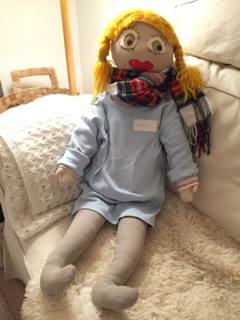
For children to be comfortable with having a thin plastic swab – with something that looks like a tiny brush at the tip – stuck deep into their throat, Nina Moe visited the childcare centre before the actual sampling. She brought along her doll Laura to demonstrate what would happen. The children got to swab the doll, and felt comfortable about the situation. When Nina took the actual samples, the children were calm and cooperative. Photo: NTNU
When children are hospitalized with respiratory infections, doctors begin to look for viruses and bacteria.
“It’s not like a particular disease originates from a single virus,” Døllner says. “Often we find anywhere from one to four virus types in a child’s airways. It can be difficult to know which viruses are just there and not causing a problem, and which viruses and bacteria are causing the illness,” he says.
Sometimes these results have a bearing on what treatment doctors provide. Døllner and Moe wanted to know more about which viruses normally healthy children have in their airways, and compare that with the viruses that seriously ill children have.
Took 343 mucus samples
Moe contacted two large childcare centres with apparently healthy children in Trondheim. The parents and employees all supported the project, and Moe took 343 mucus samples of the children over a span of two years.
A total of 161 children participated in the study. Mucus samples were taken while the children were in childcare during four fall and winter visits. The children were also clinically evaluated by a paediatrician, who listened to their lungs and checked their throat and ears. Close to 80 per cent of all the children from the two participating daycares participated in the study.
- You might also like: No one wants to foot the bill for new antibiotics
Respiratory infection signs in two of three children
It turned out that that there weren’t only healthy children in the childcare centres.
Analyses of the mucus samples showed that 43 per cent of the children had one or more viruses in their respiratory tract.
The clinical examination showed that 24 per cent had obvious signs of respiratory infection, with red swollen throats and red inflamed eardrums. Another 41 per cent had milder signs of respiratory infection, with stuffy noses and slightly affected eardrums.
Only one in three children showed no signs of respiratory infection at all.
Among the children with clear signs of respiratory infection, 70 per cent had one or more viruses in their respiratory tract. Even among children with no signs of respiratory infection, 30 per cent had viruses.
Repeat offender among viruses
All told, Moe found 13 different respiratory viruses. The common cold virus (rhinovirus) was the biggest offender.
“The rhinovirus can also cause a more severe respiratory infection in some children. We often see this virus in hospitals. But usually we find the more aggressive virus types in hospitals rather than in daycare settings,” says Moe.
Before each sampling and examination, parents were asked whether the child had been sick in the last 14 days, and if the child was healthy now. Among the children reported as healthy, and who also had a normal clinical examination, 24 per cent still had one or more respiratory viruses in their mucus samples.
Moe explains that certain viruses may be present in the respiratory tract after symptoms disappear, or before a new infection, when symptoms like mucus and throat pain have not yet started.
Difficult to assess child’s illness
When children have diarrhoea, they should stay home for two days after they become symptom free. The guideline is clear. For respiratory infections, the requirement is that children should be fever free and in good general condition to be in childcare.
“It’s certainly difficult for parents to assess this sometimes. Parents and childcare staff share the responsibility of deciding when sick children should stay home. The child’s own health is the main concern, but so is avoiding the spread of infection,” say Moe and Døllner.
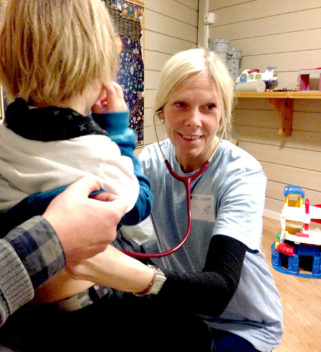
Paediatrician and PhD candidate Nina Moe examines a child and collects nasal mucus sample as part of respiratory virus study. Photo: NTNU
The study also showed that the viruses spread extremely quickly. On one visit, nearly 80 per cent of all the children in one childcare section had the same virus, while the neighbouring section had no incidence of it. The next time the situation was reversed. This pattern was particularly evident in the sections with younger children, where the incidence of viruses was higher than in the older childcare sections.
Sick children should stay home
Given this infection pattern, Døllner and Moe believe that it can be beneficial to keep children at home when they have a respiratory tract infection with a lot of mucus and coughing. This can help reduce the frequent spread of viruses in childcare centres, even if the child has no fever and is in good condition otherwise.
- You might also like: When should children stay home from childcare?
“For children with chronic illnesses like asthma or heart disease, it’s an extra burden to attend childcare if a lot of viruses are floating around there,” says Døllner.
Both Døllner and Moe stress the importance of good hygiene measures in childcare settings. They are not suggesting that the hygiene was inadequate in the childcare centres they visited, but emphasize the importance of employees consistently maintaining good routines.
“Maybe parents with children under three years old should receive more days of subsidized care benefits when their children are sick? This would make it easier for parents to stay home with children who are coughing and congested,” says Døllner.
https://journals.plos.org/plosone/article?id=10.1371/journal.pone.0159196
